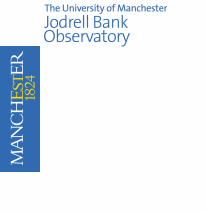Introduction to cosmic masers
The word "maser" is an acronym for Microwave Amplification by Stimulated Emission of Radiation. Masers are the long-wave equivalent of lasers; emitting in the microwave, rather than the visible part of the electromagnetic spectrum. Both systems rely on a chemical species with an excited energy-level population being stimulated into lower energy levels, either by photons or collisions with other species. Photons are then emitted by the atom or molecule, in addition to the original photons that entered the system. The photons entering the system stimulate the emission of further photons of the same frequency, meaning that a strong beam of monochromatic radiation is produced.
The first laboratory maser was constructed in 1953 by Charles Townes and Arthur Schawlow and based on idea of stimulated emission first proposed by Albert Einstein. In 1965 the first cosmic maser was discovered, in a region of OH gas close to a young star. Since then, many hundreds of cosmic masers have been observed, giving us an insight into the physical conditions in a large range of astronomical regions.
Cosmic masers are very bright radio sources which can be studied with high angular resolution using interferometers such as MERLIN and VLBI. They are pumped by energy from the central object (e.g. a young star, red giant or active galactic nucleus). The maser emission, due to its long wavelength is able to provide information on dusty regions which are undetectable at almost all other wavelengths. Due to their narrow spectral lines, they also act as a high-resolution probe of gas kinematics in outflow regions and active galactic nuclei.
The cosmic masers we study at Jodrell Bank are clouds of gas and dust, containing excited molecules of hydroxyl (OH), water (H2O), methanol (CH3OH), silicon monoxide (SiO) and formaldehyde (CH2OH). The spectral line emission is typically amplified thousands of times by the maser process, making them visible over much larger distances.
Sites of maser emission include: comets, star-forming regions, circumstellar envelopes of red giant stars, supernova remnants and discs in the centres of active galaxies.
